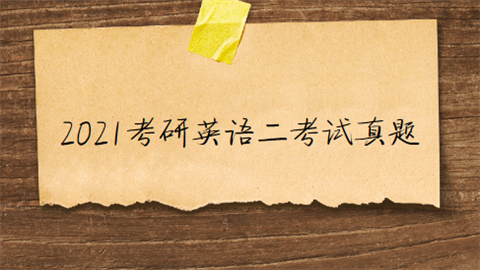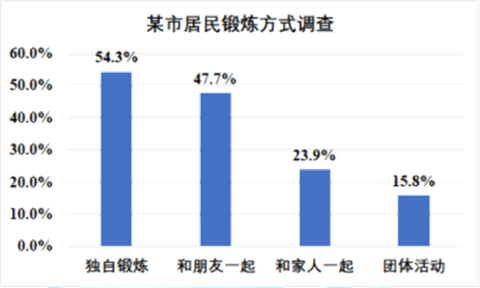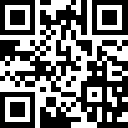时间如白驹过隙,转眼间2020年考研初试马上就要开始了,2021年考研的同学也开始进行复习了,早准备可以早收获,2021年考研的同学在准备阶段首要的就是辅导书的选择,今天就教给大家如何选择适合自己的辅导书。

1、试题类辅导书
(1)是否符合教材标准;
(2)出题是否深入;
(3)分类是否合理,解析是否到位;
(4)解析的方法是否容易理解,是不是具有实用性。
2、专业课辅导书
符合网上公布的参考书内容,出版社最好也一样,符合考试大纲,符合特定要求。
3、教材类参考书
这类参考书是在把教材过完以后使用的,所以内容必须和教材契合,对应的练习题必须有,重点和非重点也要区分开来。
在众多的考研辅导书中,相信大家已经眼花缭乱,其实只要根据大纲,并且书页里面的设计也符合个人审美,选了就没错,在这里要提醒2021年考研的学子们,考研不要盲目,想好了再动手准没错的。
【导读】众所周知,考研真题对于考研er来说,是至关重要的,英语是考研公共科目,考研英语考试采取“一题多卷”模式,试题答案顺序不统一,大家需要依据试题进行核对,今天给大家带来的是2021考研英语二考试真题(完整版),赶紧练习起来吧。

Section I Use of English
Directions:
Read the following text. Choose the best word(s) for each numbered blank and mark A, B, C or D on the ANSWER SHEET. (10 points)
It's not difficult to set targets for staff. It is much harder, _____(1), to understand their negative consequences. Most work-related behaviors have multiple components. _____(2)one and the others become distorted.
Travel on a London bus and you'll _____(3)see how this works with drivers. Watch people get on and show their tickets. Are they carefully inspected? Never. Do people get on without paying? Of course! Are there inspectors to _____(4)that people have paid? Possibly, but very few. And people who run for the bus? They are _____(5). How about jumping lights? Buses do so almost as frequently as cyclists.
Why? Because the target is _____(6).People complained that buses were late and infrequent. _____(7), the number of buses and bus lanes were increased, and drivers were _____(8)or punished according to the time they took. And drivers hit these targets. But they _____(9)hit cyclists. If the target was changed to _____(10),you would have more inspectors and more sensitive pricing. If the criterion changed to safety, you would get more _____(11)drivers who obeyed traffic laws. But both these criteria would be at the expense of time.
There is another _____(12)people became immensely inventive in hitting targets. Have you _____(13)that you can leave on a flight but still arrive on time? Tailwinds? Of course not! Airlines have simply changed the time a _____(14)is meant to take. A one-hour flight is now ballad as a two-hour flight.
The _____(15)of the story is simple. Most jobs are multidimensional, with multiple criteria. Choose one criterion and you may well _____(16)others. Everything Can be done faster and made cheaper, but there is a _____(17). Setting targets can and does have unforeseen negative consequences.
This is not an argument against target-setting. But it is an argument for exploring consequences first. All good targets should have multiple criteria _____(18)critical factors such as time, money, quality and customer feedback. The trick is not only to _____(19)just one or even two dimensions of the objective, but also to understand how to help people better _____(20)the objective.
1.A.therefore B.however C.again D.moreover
2.A.Emphasize B.Identify C.Assess D.Explain
3.A.nearly B.curiously C.eagerly D.quickly
4.A.claim B.prove C.cheek D.recall
5.A.threatened B.ignored C.mocked D.blamed
6.A.punctuality B.hospitality C.competition D.innovation
7.A.Yet B.So C.Besides D.Still
8.A.hired B.trained C.rewarded D.grouped
9.A.only B.rather C.once D.also
10.A.comfort B.revenue C.efficiency D.security
11.A.friendly B.quiet C.cautious D.diligent
12.A.purpose B.problem C.prejudice D.policy
13.A.interesting B.revealed C.admitted D.noticed
14.A.break B.trip C.departure D.transfer
15.A.moral B.background C.style D.form
16.A.interpret B.criticize C.sacrifice D.tolerate
17.A.task B.secret C.product D.cost
18.A.leading to B.calling for C.relating to D.accounting for
19.A.specify B.predict C.restore D.create
20.A.modify B.review C.present D.achieve
Section II Reading Comprehension
Part A
Directions:
Read the following four texts. Answer the questions below each text by choosing A, B, C or D. Mark your answers on the ANSWER SHEET. (40 points)
Reskilling is something that sounds like a buzzword but is actually a requirement if we plan to have a future where a lot of would-be workers do not get left behind.
We know we are moving into a period where the jobs in demand will change rapidly, as will the requirements of the jobs that remain. Research by the WEF detailed in the Harvard Business Review, finds that on average 42 per cent of the "core skill" within job roles will change by 2022. That is a very short timeline, so we can only imagine what the changes will be further in the future.
The question of who should pay for reskilling is a thorny one. For individual companies, the temptation is always to let go of workers whose skills are no longer demand and replace them with those whose skills are. That does not always happen. AT&T is often given as the gold standard of a company who decided to do a massive reskilling program rather than go with a fire-and-hire strategy ultimately retraining 18,000 employees. Prepandemic, other companies including Amazon and Disney had also pledged to create their own plans. When the skills mismatch is in the broader economy though, the focus usually turns to government to handle. Efforts in Canada and elsewhere have been arguably languid at best, and have given us a situation where we frequently hear of employers begging for workers even at times and in regions where unemployment is high.
With the pandemic, unemployment is very high indeed. In February, at 3.5 per cent and 5.5 per cent respectively, unemployment rates in Canada and the United States were at generational lows and worker shortages were everywhere. As of May, those rates had spiked up to 13.3 per cent and 13.7 per cent, and although many worker shortages had disappeared, not all had done so. In the medical field, to take an obvious example the pandemic meant that there were still clear shortages of doctors, nurses and other medical personnel.
Of course, it is not like you can take an unemployed waiter and train him to be doctor in few weeks, no matter who pays for it. But even if you cannot close that gap, maybe you can close others, and doing so would be to the benefit of all concerned. That seems to be the case in Sweden, where the pandemic kick-started a retraining program where business as well as government had a role.
Reskilling in this way would be challenging in a North American context. You can easily imagine chorus of "can't do that" because teachers or nurses or whoever have special skills, and using any support who has been quickly trained is bound to end in disaster, Maybe. Or maybe it is something that can work well in Sweden, with its history of co-operation between businesses, labor and government, but not in North America where our history is very different. Then again, maybe it is akin to wartime, when extraordinary things take place but it is business as usual after the fact. And yet, as in war the pandemic is teaching us that many things, including rapid reskilling, can be done if there is a will to do them. In any case. Sweden's work force is now more skilled, in more things, and more flexible than it was before.
Of course, reskilling programs, whether for pandemic needs or the post pandemic world, are expensive and at a time when everyone's budgets are lean this may not be the time to implement them. Then again, extending income support programs to get us through the next months is expensive, too, to say nothing of the cost of having a swath of long-term unemployed in the POST-COVID years given that, perhaps we should think hard about whether the pandemic can jump-start us to a place where reskilling becomes much more than a buzzword.
21.Research by the World Economic Forum suggests_____
A.an increase in full-time employment
B.an urgent demand for new job skills
C.a steady growth of job opportunities
D.a controversy about the "core skills"
22.AT&T is cited to show_____
A.an alternative to the fire-and-hire strategy
B.an immediate need for government support
C.the importance of staff appraisal standards
D.the characteristics of reskilling program
23.Efforts to resolve the skills mismatch in Canada_____
A.have driven up labor costs
B.have proved to be inconsistent
C.have met with fierce opposition
D.have appeared to be insufficient
24.We can learn from Paragraph 3 that there was_____.
A.a call for policy adjustment.
B.a change in hiring practices.
C.a lack of medical workers.
D.a sign of economic recovery.
25.Scandinavian Airlines decided to_____.
A.Great job vacancies for the unemployed.
B.Prepare their laid-off workers for other jobs.
C.Retrain their cabin staff for better services.
D.finance their staff's college education.
With the global population predicted to hit close to 10 billion by 2050, and forecasts that agricultural production in one regions will need to nearly double to keep pace, food security is increasingly making headlines In the UK, it has become a big talking point recently too, for a rather particular reason: Brexit.
Brexit is seen by some as an opportunity to reverse a recent trend towards the UK importing food. The country produces only about 60 per cent of the food it eats, down from almost three-quarters in the late 1980s. A move back to self-sufficiency, the argument goes, would boost the farming industry, political sovereignty and even the nations health, Sounds great but how feasible is this vision?
According to a report on UK food production from the University of Leeds, UK, 85 percent of the country's total land area is associated with meat and dairy production. That supplies 80 percent of what is consumed, so even covering the whole country in livestock farms wouldn't allow us to cover all our meat and dairy needs.
There are many caveats to those figures, but they are still grave. To become much more self-sufficient. The UK would need to drastically reduce its consumption of animal foods, and probably also farm more intensively meaning fewer green fields and more factory style production.
But switching to a mainly plant-based diet wouldn't help. There is a good reason why the UK is dominated by animal husbandry, most of its terrain doesn't have the right soil or climate to grow crops on commercial basis. Just 25 per cent of the country's land is suitable for crop-growing, most of which is already occupied by arable fields. Even if we converted all the suitable land to fields of fruit and vegetable which would involve taking out all the nature reserves and removing thousands of people from their homes-we would achieve only a 30 percent boost in crop production.
Just 23 per cent of the fruit and vegetables consumed in the UK are currently home-grown, so even with the most extreme measures we could meet only 30 per cent of our fresh produce needs. That is before we look for the space to grow the grains, sugars, seeds and oils that provide us with the vast bulk of our current calorie intake.
26.Some people argue that food self-sufficiency in the UK would_____.
A.a be hindered by its population growth
B.contribute to the nations well-being
C.become a priority of the government
D.post a challenge to its farming industry
27.The report by the University of Leeds showed that in the UK_____.
A.farmland has been inefficiently utilised
B.factory style production needs reforming
C.most land is used for meat and dairy production
D.more green fields will be converted for farming
28.Crop-growing in the UK is restricted due to_____.
A.its farming technology
B.its dietary tradition
C.its natural conditions
D.its commercial interests
29.It can be learned from the last paragraph that British people_____.
A.rely largely on imports for fresh produce
B.enjoy a steady rise in fruit consumption
C.are seeking effective ways to cut calorie intake
D.are trying to grow new varieties of grains
30.The author's attitude to food self-efficiency in the UK is_____.
A.defensive
B.doubtful
C.tolerant
D.optimistic
When Microsoft bought task management app. Wunerlist and mobile calendar Sunrise in 2015, it picked up two newcomers that were attracting considerable buzz in Silicon Valley. Microsoft' own Office dominates the market for "productivity" software, but the start-ups represented a new wave of technology designed from the ground up for the smartphone world.
Both apps, however, were later scrapped, after Microsoft said it had used their best features in its own products. Their teams of engineers stayed on, making them two of the many "acqui-hires" that the biggest companies have used to feed their insatiable hunger for tech talent.
To Microsoft's critics, the fates of Wunderlist and Sunrise are examples of a remorseless drive by Big Tech to chew up any innovative companies that lie in their path. "They bought the seedlings and closed them down," complained Paul Amold, a partner at San Francisco-based Switch Ventures, putting paid to businesses that might one day tum into competitors. Microsoft declined to comment.
Like other start-up investors, Mr Amold's own business often depends on selling start-ups to larger tech companies, though he admits to mixed feelings about the result: "I think these things are good for me, if I put my selfish hat on. But are they good for the American economy? I don't know."
The US Federal Trade Commission says it wants to find the answer to that question. This week, it asked the five most valuable US tech companies for information about their many small acquisitions over the past decade. Although only a research project at this stage, the request has raised the prospect of regulators wading into early-stage tech markets that until now have been beyond their reach.
Given their combined market value of more than$5.5tm, rifling through such small deals-many of them much less prominent than Wunderlist and Sunrise-might seem beside the point. Between them, the five companies (Apple, Microsoft, Google, Amazon and Facebook) have spent an average of only $3.4 billion a year on sub-$1 billion acquisitions over the past five years-a drop in the ocean compared with their massive financial reserves, and the more than $130 billion of venture capital that was invested in the US last year.
However, critics say the big companies use such deals to buy their most threatening potential competitors before their businesses have a chance to gain momentum, in some cases as part of a “buy and kill” tactic to simply close them down.
31.What is true about Wunderlist and Sunrise after their acquisitions?
A.Their engineers were retained.
B.Their market values declined.
C.Their tech features improved.
D.Their products were re-priced.
32.Microsoft's critics believe that the big tech companies tend to_____.
A.exaggerate their product quality
B.eliminate their potential competitors
C.treat new tech talent unfairly
D.ignore public opinions
33.Paul Arnold is concerned that small acquisitions might_____.
A.weaken big tech companies
B.worsen market competition
C.harm the national economy
D.discourage start-up investors
34.The US Federal Trade Commission intend to____.
A.examine small acquisitions
B.limit Big Tech's expansion
C.supervise start-ups operations
D.encourage research collaboration
35.For the five biggest tech companies, their small acquisition have____.
A.brought little financial pressure
B.raised few management challenges
C.set an example for future deals
D.generate considerable profits
We're fairly good at judging people based on first impression, thin slices of experience ranging from a glimpse of a photo to five-minute interaction, and deliberation can be not only extraneous but intrusive. In one study of the ability she dubbed "thin slicing," the late psychologist Nalini Ambady asked participants to watch silent 10-second video clips of professors and to rate the instructor's overall effectiveness. Their ratings correlated strongly with students' end-of-semester ratings. Another set of participants had count backward from 1, 000 by nines as they watched the clips, occupying their conscious working memory. Their ratings were just as accurate, demonstrating the intuitive nature of the social processing.
Critically, another group was asked to spend a minute writing down reasons for their judgment, before giving the rating. Accuracy dropped dramatically. Ambady suspected that deliberation focused them on vivid but misleading cues, such as certain gestures or utterances, rather than letting the complex interplay of subtle
signals form a holistic impression. She found similar interference when participants watched 15-second clips of pairs of people and judged whether they were strangers, friends, or dating partners. Other research shows we're better at detecting deception an sexual orientation from thin slices when we rely on intuition instead of reflection. "It's as if you're driving a stick shift," says Judith Hall, a psychologist at Northeastern University. "and if you start thinking about it too much, you can't remember what you're doing. But if you go on automatic pilot, you're fine. Much of our social life is like that."
Thinking too much can also harm our ability to form preferences. College students' ratings of strawberry jams and college course aligned better with experts' opinions when the students weren't asked to analyze their rationale. And people made car-buying decisions that were both objectively better and more personally satisfying when asked to focus on their feelings rather than on details, but only if the decision was complex-when they had a lot of information to process.
Intuition's special powers are unleashed only in certain circumstances. In one study participants completed a battery of eight tasks, including four that tapped reflective thinking (discerning rule comprehending vocabulary) and four that tapped intuition an creativity (generating new products or figures of speech). Then the rated the degree to which they had used intuition ("gut feelings," "hunches," "my heart").Use of their gut hurt their performance on the first four tasks, as expected, and helped them on the rest. Sometimes the heart is smarter than the head.
36.Nalini Ambaby's study deals with_____
A.instructor student interaction
B.the power of people' s memory
C.the reliability of first impressions
D.People's ability to influence others
37.In Ambaby's study, rating accuracy dropped when participants_____
A.gave the rating in limited time
B.focused on specific details
C.watched shorter video clips
D.discussed with on another
Section II Reading Comprehension
Part B
Directions:
Read the following text and answer the questions by choosing the most suitable subheading from the list A-G for each of the numbered paragraphs (41-45).There are two extra subheadings. Mark your answers on the ANSWER SHEET. (10 points)
How to Disagree with Someone More Powerful than You
Your boss proposes a new initiative you think won't work. Your senior colleague outlines a project timeline you think is unrealistic. What do you say when you disagree with someone who has more power than you do? How do you decide whether it's worth speaking up? And if you do, what exactly should you say? Here's how to disagree with someone more powerful than you.
_____(41)
You may decide it's best to hold off on voicing your opinion. Maybe you haven t finished thinking the problem through, the whole discussion was a surprise to you, or you want to get a clearer sense of what the group thinks. If you think other people are going to disagree too, you might want to gather your army first. People can contribute experience or information to your think—all the things that would make the disagreement stronger or more valid. It's also a good idea to delay the conversation if you're in a meeting or other public space. Discussing the issue in private will make the powerful person feel less threatened.
_____(42)
Before you share your thoughts, think about what the powerful person cares about— it may be "the credibility of their team on getting a project done on time," says Grenny. You're more likely to be heard if you can connect your disagreement to a "higher purpose". When you do speak up, don't assume the link will be clear. You 'll want to state it overtly, contextualizing your statements so that you're seen not as a disagreeable underling but as a colleague who's trying to advance a shared goal. The discussion will then become more like a chess game than a boxing match.
_____(43)
This step may sound overly deferential, but it's a smart way to give the powerful person psychological safety and control. You can say something like, "I know we seem to be moving toward a first-quarter commitment here. I have reasons to think that won't work. I'd like to lay out my reasoning. Would that be OK?" This gives the person a choice, allowing them to verbally opt in. And, assuming they say yes, it will make you feel more confident about voicing your disagreement.
_____(44)
You might feel your heart racing or your face turning red, but do whatever you can to remain neutral in both your words and actions. When your body language communicates reluctance or anxiety, it undercuts the message. It sends a mixed message, and your counterpart gets to choose what to read. Deep breaths can help, as can speaking more slowly and deliberately. When we feel panicky we tend to talk louder and faster. Simply slowing the pace and talking in an even tone helps the other person calm down and does the same for you. It also makes you seem confident, even if you aren't.
_____(45)
Emphasize that you're offering your opinion, not gospel truth. It may be a well-informed, well-researched opinion, but it's still an opinion, my talk tentatively and slightly understate your confidence. Instead of saying something like "If we set an end-of-quarter deadline, we will never make it," say, "This is just my opinion, but I don't see how we will make that deadline." Having asserted your perfectly willing to talk-and may even be flattered to receive your attention.
41._____.
A.Stay calm
B.Stay humble
C.Don't make judgments
D.Be realistic about the risks
E.Decide whether to wait
F.Ask permission to disagree
G.Identify a shared goal
42._____.
A.Stay calm
B.Stay humble
C.Don't make judgments
D.Be realistic about the risks
E.Decide whether to wait
F.Ask permission to disagree
G.Identify a shared goal
43._____.
A.Stay calm
B.Stay humble
C.Don't make judgments
D.Be realistic about the risks
E.Decide whether to wait
F.Ask permission to disagree
G.Identify a shared goal
44._____.
A.Stay calm
B.Stay humble
C.Don't make judgments
D.Be realistic about the risks
E.Decide whether to wait
F.Ask permission to disagree
G.Identify a shared goal
45._____.
A.Stay calm
B.Stay humble
C.Don't make judgments
D.Be realistic about the risks
E.Decide whether to wait
F.Ask permission to disagree
G.Identify a shared goal
Section III Translation
Directions:
Read the following text carefully and then translate the underlined segments into Chinese. Your translation should be written neatly on the ANSWER SHEET. (10 points)
46.We tend to think that friends and family members are our biggest source of connection, laughter and warmth. While that may well be true, researchers have also recently found that interacting with strangers actually brings a boost in mood and feelings of belonging that we didn't expect.
In one series of studies, researchers instructed Chicago-area commuters using public transportation to strike up conversation with someone near them. On average, participants who followed this instruction felt better than those who had been told to stand or sit in silence. The researchers also argued that when we shy away from casual interactions with strangers, it is often due to a misplaced anxiety that they might not want to talk to us. Much of that time, however, this belief is false. As it tums out, many people are actually perfectly willing to talk and may even be flattered to receive your attention.
Section IV Writing
Part A (10 points)
47.Directions:
Suppose you are organising an online meeting. Write an email to Jack, an international student.
(1) invite him to participate, and
(2) tell him the details.
You should write neatly on ANSWER SHEET.
Do not sign your own name at the end of the e-mail. Use "Li Ming" instead.
Do not write the address.
Part B (15 points)
48.Directions:
Write an essay based on chart below. In your writing, you should
(1) interpret the chart, and
(2) give your comments
You should write about 150 words on the ANSWER SHEET.

以上就是2021考研英语二考试真题(完整版),希望大家能在考前进行训练,做好考前模拟,按照考研英语考前冲刺复习计划,认真进行学习,保证在考试的时候,不会因为紧张或者答题时间不够,而影响考试的结果,祝成功!
【导语】研究生录取通知书是考生前往理想学校报到的重要文件,也代表着自己已经成为此院校的一员,可见对于2021年考生来说,2021考研录取通知书是非常重要的,那么2021考研录取通知书怎么进行领取?接下来就带大家来具体了解一下相关事项。

1、查询研究生录取通知书地址
研究生录取通知书邮寄地址为考生在报名时填的通讯地址,考生可以电话咨询所在地区的研招办或携带本人身份证及准考证前往研招办查询研究生录取通知书邮寄地址。
如果临时变更研究生录取通知书接收地址,一定要及时通知所报院校更改,没有更改就会按照网上报名所填的地址和电话邮寄研究生录取通知书。
2、研究生录取通知书发什么快递
研究生录取通知书一般都用EMS快递,当然还有一些院校是顺丰快递。
就像我们平时收快递一样,所提供的地址与学校的距离越近,则收到研究生录取通知书就会相对越快,距离越远,收到研究生录取通知书的时间则会后延,通常情况下大概是2-6天。地址、电话、联系人一定要写清楚,这样可以确保收到研究生录取通知书。
3、领取研究生录取通知书注意事项
考生本人领取研究生录取通知书需携带准考证、身份证原件。
他人代领研究生录取通知书,请携带本人身份证原件、考生委托书、考生本人的准考证、身份证原件领取。
研究生录取通知书信封内包含:录取通知书、入学通知书、调档函、新生入学须知、银行卡、助学贷款申请表等。(仅供参考,不同院校、不同录取类型的考生其研究生录取通知书信封也不相同。)
关于2021考研录取通知书领取相关事项,就给大家分享到这里了,希望对大家能有所帮助,拟自取研究生录取通知书的新生要留意各院校官方公布的时间和研招办地址或者电话咨询。考生要根据研究生录取通知书内容做好入学准备,并提前规划自己未来的学习生活,祝大家成功!
【导语】目前,2021年考研已进入录取阶段,部分院校已公布考研录取通知书发放时间,其中,大部分院校录取通知书是在6月左右开始下发,接下来就带大家了解一下部分院校2021考研录取通知书下发时间,一起来看看吧。

1、部分院校2021考研录取通知书发放时间
安徽工业大学预计在6月10日左右
沈阳理工大学预计在6月份
大连交通大学预计为6月份
西安理工大学预计在6月份
上海师范大学6月中旬左右
温州大学6月中下旬
浙江财经大学6月下旬
上海电力大学6月下旬—7月中旬
杭州电子科技大学7月中旬
上海外国语大学6月下旬
中国政法大学6月中下旬
上海电力大学6月下旬—7月中旬
哈尔滨工程大学机电工程学院6月下旬
西北师范大学预计在6月
中央财经大学六月底
2、领取考研录取通知书注意事项
考生本人领取考研录取通知书:需携带准考证、身份证原件。
他人代领考研录取通知书:请携带本人身份证原件、考生委托书、考生本人的准考证、身份证原件领取。
考研录取通知书信封内包含:录取通知书、入学通知书、调档函、新生入学须知、银行卡、助学贷款申请表等。(仅供参考,不同院校、不同录取类型的考生其研究生录取通知书信封也不相同。)
拟自取研究生录取通知书的新生要留意各院校官方公布的时间和研招办地址或者电话咨询。
以上就是2021考研录取通知书下发时间等相关情况介绍,考生要根据研究生录取通知书内容做好入学准备,并提前规划自己未来的学习生活,祝一切顺利!










